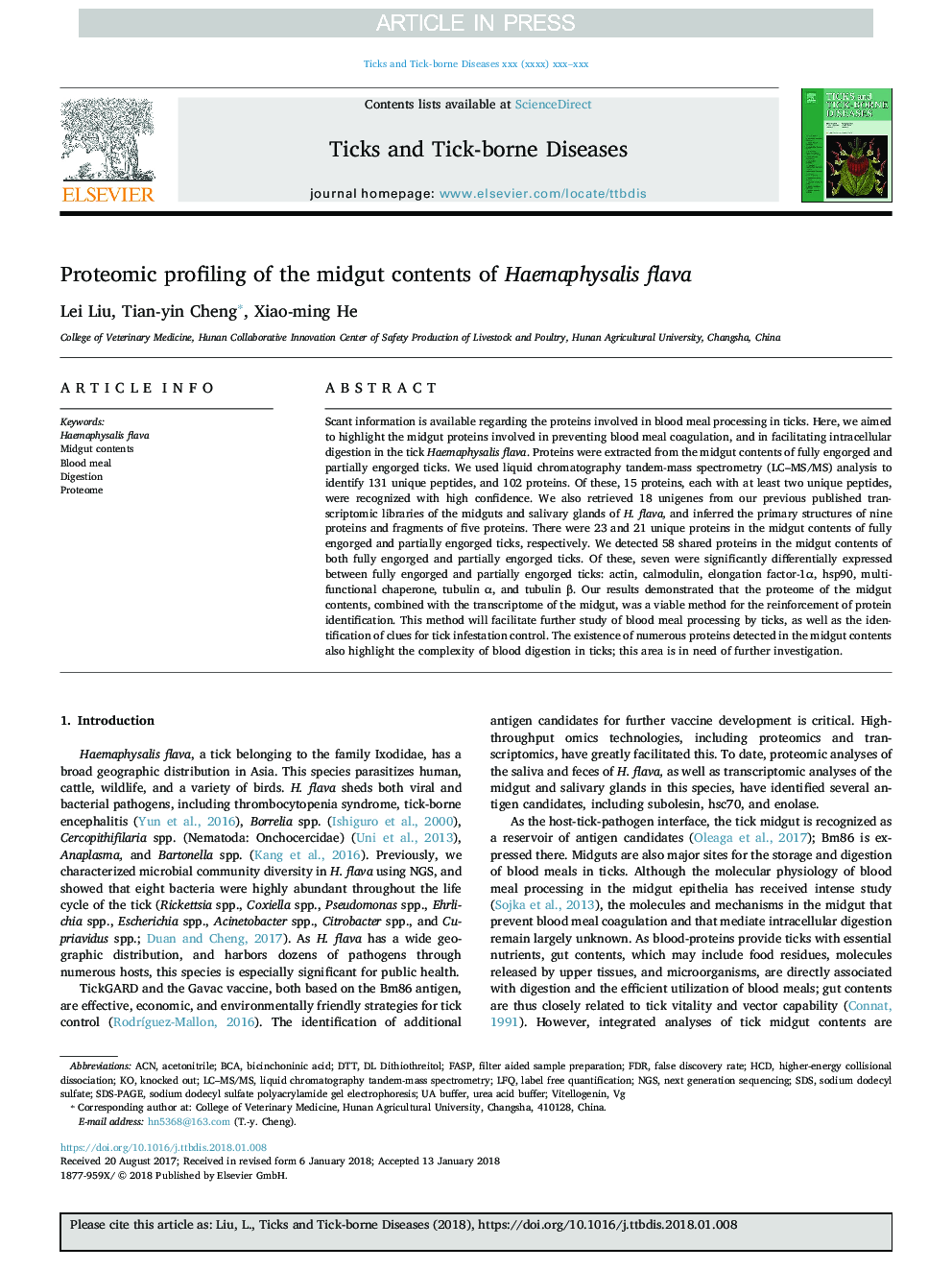| Article ID | Journal | Published Year | Pages | File Type |
|---|---|---|---|---|
| 8507171 | Ticks and Tick-borne Diseases | 2018 | 6 Pages |
Abstract
Scant information is available regarding the proteins involved in blood meal processing in ticks. Here, we aimed to highlight the midgut proteins involved in preventing blood meal coagulation, and in facilitating intracellular digestion in the tick Haemaphysalis flava. Proteins were extracted from the midgut contents of fully engorged and partially engorged ticks. We used liquid chromatography tandem-mass spectrometry (LC-MS/MS) analysis to identify 131 unique peptides, and 102 proteins. Of these, 15 proteins, each with at least two unique peptides, were recognized with high confidence. We also retrieved 18 unigenes from our previous published transcriptomic libraries of the midguts and salivary glands of H. flava, and inferred the primary structures of nine proteins and fragments of five proteins. There were 23 and 21 unique proteins in the midgut contents of fully engorged and partially engorged ticks, respectively. We detected 58 shared proteins in the midgut contents of both fully engorged and partially engorged ticks. Of these, seven were significantly differentially expressed between fully engorged and partially engorged ticks: actin, calmodulin, elongation factor-1α, hsp90, multifunctional chaperone, tubulin α, and tubulin β. Our results demonstrated that the proteome of the midgut contents, combined with the transcriptome of the midgut, was a viable method for the reinforcement of protein identification. This method will facilitate further study of blood meal processing by ticks, as well as the identification of clues for tick infestation control. The existence of numerous proteins detected in the midgut contents also highlight the complexity of blood digestion in ticks; this area is in need of further investigation.
Keywords
SDSHaemaphysalis flavaLFQFASPVitellogeninHCDBCAACNDTTFDRNGSLC–MS/MSLabel free quantificationAcetonitrileSDS-PAGESodium dodecyl sulfate polyacrylamide gel electrophoresishigher-energy collisional dissociationbicinchoninic acidNext generation sequencingsodium dodecyl sulfateliquid chromatography tandem-mass spectrometryfalse discovery rateBlood mealProteomeDigestion
Related Topics
Life Sciences
Agricultural and Biological Sciences
Animal Science and Zoology
Authors
Lei Liu, Tian-yin Cheng, Xiao-ming He,
